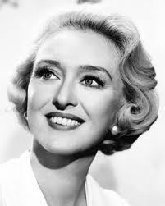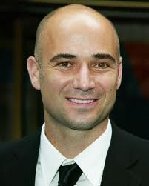
Lassie is a fictional female Rough Collie dog and is featured in a 1938 short story by Eric Knight that was later expanded to a 1940 full-length novel, Lassie Come-Home. Knight's portrayal of Lassie bears some features in common with another fictional female collie of the same name, featured in the British writer Elizabeth Gaskell's 1859 short story "The Half Brothers". In "The Half Brothers", Lassie is loved only by her young master and guides the adults back to where two boys are lost in a snowstorm.
Knight's novel was filmed by Metro-Goldwyn-Mayer in 1943 as Lassie Come Home, with a dog named Pal playing Lassie. Pal then appeared with the stage name "Lassie" in six other MGM feature films through 1951. Pal's owner and trainer, Rudd Weatherwax, then acquired the Lassie name and trademark from MGM and appeared with Pal (as "Lassie") at rodeos, fairs, and similar events across America in the early 1950s. In 1954, the long-running Emmy-winning television series Lassie debuted and, over the next 19 years, a succession of Pal's descendants appeared on the series. The "Lassie" character has appeared in radio, television, film, toys, comic books, animated series, juvenile novels, and other media. Pal's descendants continue to play Lassie today.
An early depiction of Lassie is found in British writer Elizabeth Gaskell's 1859 short story "The Half-brothers". In the story, Lassie is described as a female collie with "intelligent, apprehensive eyes" who rescues two half-brothers who are lost and dying in the snow. When the younger brother can no longer carry on, elder brother Gregory, Lassie's master, ties a handkerchief around Lassie's neck and sends her home. Lassie arrives home, and leads the search party to the boys. When they arrive Gregory is dead, but his younger half-brother is saved. Thus, Gaskell apparently originated the character Lassie and, at the same time, defined the "Lassie saves the day" storyline that is the essence of subsequent Lassie tales.
According to writer Nigel Clarke in the "Shipwreck Guide to Dorset and South Devon", the original Lassie that inspired so many films and television episodes was a rough-haired crossbreed who saved the life of a sailor during World War I.
The fictional character of Lassie was created by English author Eric Knight in Lassie Come-Home, first published as a short story in The Saturday Evening Post in 1938 and later as a full-length novel in 1940. Set in the Depression-era England, the novel depicts the lengthy journey a rough collie makes to be reunited with her young Yorkshire master after her family is forced to sell her for money.
In 1943, the novel was adapted into a feature film, Lassie Come Home, by Metro-Goldwyn-Mayer (MGM) that starred Roddy McDowall and Elizabeth Taylor. The movie was a hit and enjoyed favorable critical response. MGM followed this with several additional films, including a sequel entitled Son of Lassie (1945), starring Peter Lawford and June Lockhart, and Courage of Lassie with Elizabeth Taylor. A radio series, Lassie Radio Show, was also created, airing until 1949.
Between 1954-1973, the television series Lassie was broadcast, with Lassie initially residing on a farm with a young male master. In the eleventh season, it changed to U.S. Forest Service rangers as her companions, then the collie was on her own for a season before ending the series with Lassie residing at a ranch for orphaned children. The long-running series was the recipient of two Emmy Awards before it was canceled in 1973. Lassie won several PATSY Awards (an award for animal actors). A second series followed in the 1980s. In 1997, Canadian production company Cinar Inc. produced a new Lassie television series for the Animal Planet network in the U.S. and YTV in Canada. It ran until 1999.
- 2 (10.75-ounce) cans condensed cream of mushroom soup
- 1 1/2 cups milk
- 1/2 cup water
- 1 tablespoon butter
- 1/2 teaspoon black pepper
- 2 (6-ounce) cans tuna, drained and flaked
- 1 (10-ounce) package frozen peas
- 1 1/2 cups long-grain parboiled white rice (see Note)
- 1 (2.8-ounce) can French-fried onions
- Preheat oven to 350º.
- In a 2-1/2-quart casserole dish, combine soup, milk, water, butter, and pepper; mix well. Stir in tuna, peas, and rice then cover.
- Bake 1 hour and 15 minutes. Remove cover and top with French-fried onions (see Note); bake 5 to 7 more minutes, or until onions are golden and casserole is bubbly.














No comments:
Post a Comment